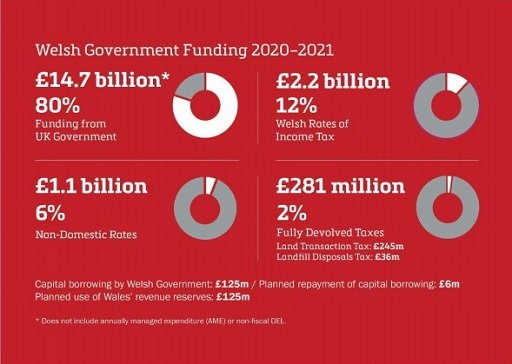1 Funding
The devolved government needs money to fund the services it controls such as the NHS in Wales through health boards and education through local authorities.
In 2019/20, the Welsh Government planned to spend about £18bn.
This funding was drawn from three main sources:
- money allocated by the UK Government
- money raised in Wales by means of taxation and other charges
- borrowing
Funding presents two major challenges: ensuring accountability and ensuring fairness.

